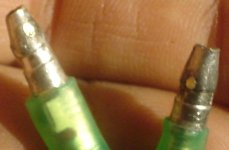Timma2500
1 kW
I've just stepped up from 12s lipo to 20s for another bike and i'm finding the initial plug-in of the battery produces a much larger spark than it did on the 12s setup.
Do you guys running say 72v and higher all use pre-charge resistor setups to conserve your plugs? Its really starting to hammer my Deans and bullets after only a few plug-ins and i know i'll need to do something about it sooner than later!
If ya's do use pre-charge setups, is there a simple way to make one?
Cheers,
Paul
Do you guys running say 72v and higher all use pre-charge resistor setups to conserve your plugs? Its really starting to hammer my Deans and bullets after only a few plug-ins and i know i'll need to do something about it sooner than later!
If ya's do use pre-charge setups, is there a simple way to make one?
Cheers,
Paul





